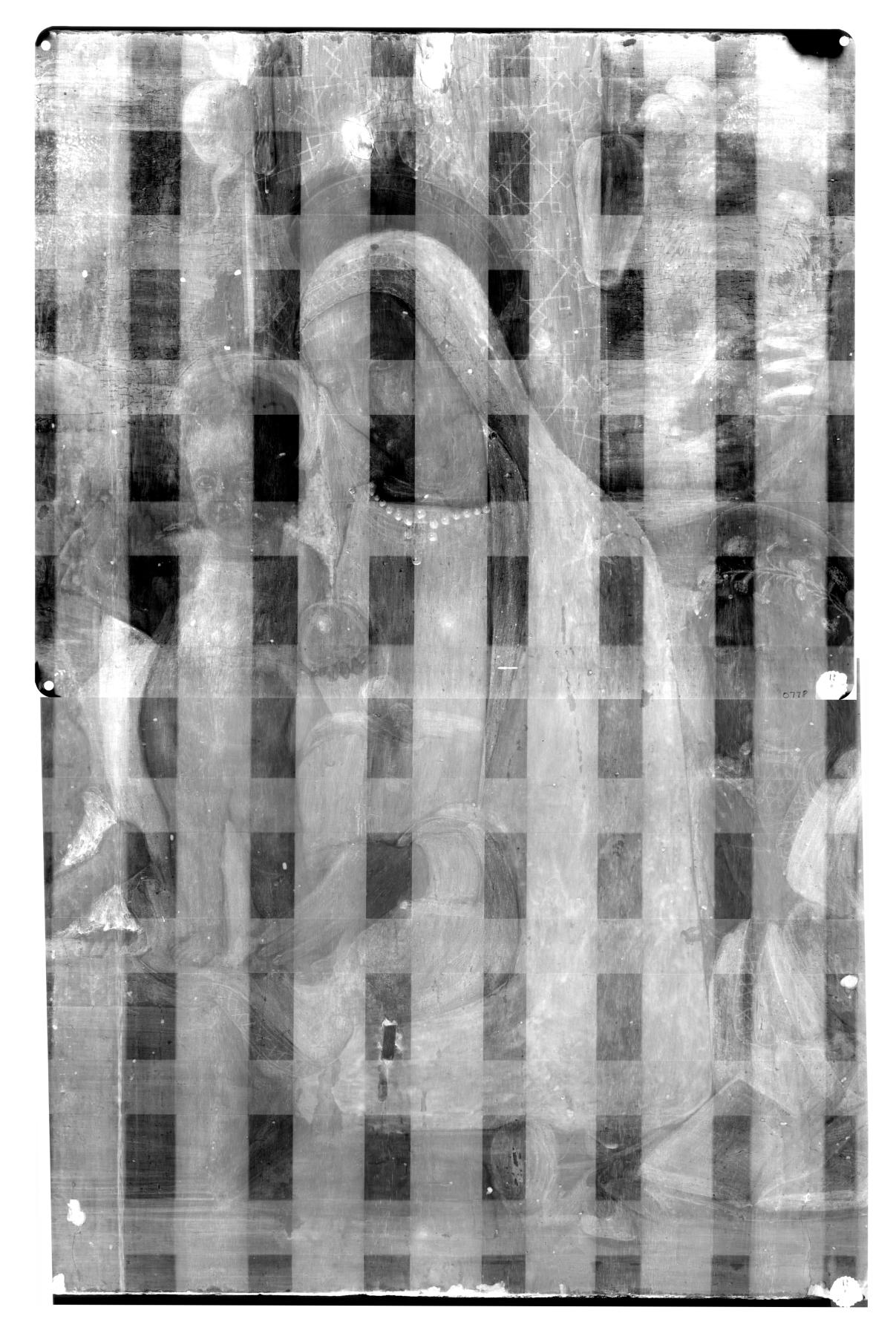Madonna and Child with St. John the Baptist and an Angel
(Renaissance Europe )
Though this painting might initially seem like a typical image of the Madonna and Child, it is quite dense in symbolism. The Christ Child, gingerly supported by his mother, stands atop a piece of pink marble carved with a pagan story, suggesting the Christian triumph over the ancient world. Christ offers a blessing with his right hand and with the other holds a crystal globe, symbolizing of the Earth. In the lower left is his cousin John the Baptist, while to the right is an angel in prayer. The angel looks at the rose and book, symbols of the Madonna’s love and learnedness. Above the Madonna is a pomegranate, symbol of the church, and gourd, symbol of Christ’s resurrection. Both fruits hang above a bright red cloth of honor making Christ and Mary’s roles as King and Queen of Heaven. In the landscape are scenes of the Massacre of the Innocents (left) and Saint Jerome in prayer before a crucifix (right).
Aside from its rich symbolic content, the painting is exquisitely executed. Many areas—the Madonna’s halo, the highlights in the green lining of her robe, the patterns in the cloth of honor, and the light falling across the distant land- and cityscape—are embellished with meticulously-applied highlights of gold. Attributed to the Abruzzese painter Francesco da Montereale, the painting probably dates from about 1505, when the artist’s style was still strongly indebted to his teachers, among them Pinturicchio (see Walters 37.1089). For a slightly late work by the same artist, see Walters 37.514.
Inscription
Provenance
Provenance (from the French provenir, 'to come from/forth') is the chronology of the ownership, custody, or location of a historical object. Learn more about provenance at the Walters.
Don Marcello Massarenti Collection, Rome [date and mode of acquisition unknown] [1897 catalogue: no. 52, as Filippino Lippi]; Henry Walters, Baltimore, 1902, by purchase; Walters Art Museum, 1931, by bequest.
Geographies
Italy, Abruzzi (Place of Origin)
Measurements
Painted surface H: 26 x W: 19 7/8 x D excluding cradle: 1/2 in. (66 x 50.5 x 1.3 cm)
Credit Line
Acquired by Henry Walters with the Massarenti Collection, 1902
Location in Museum
Not on view
Accession Number
In libraries, galleries, museums, and archives, an accession number is a unique identifier assigned to each object in the collection.
In libraries, galleries, museums, and archives, an accession number is a unique identifier assigned to each object in the collection.
37.713




